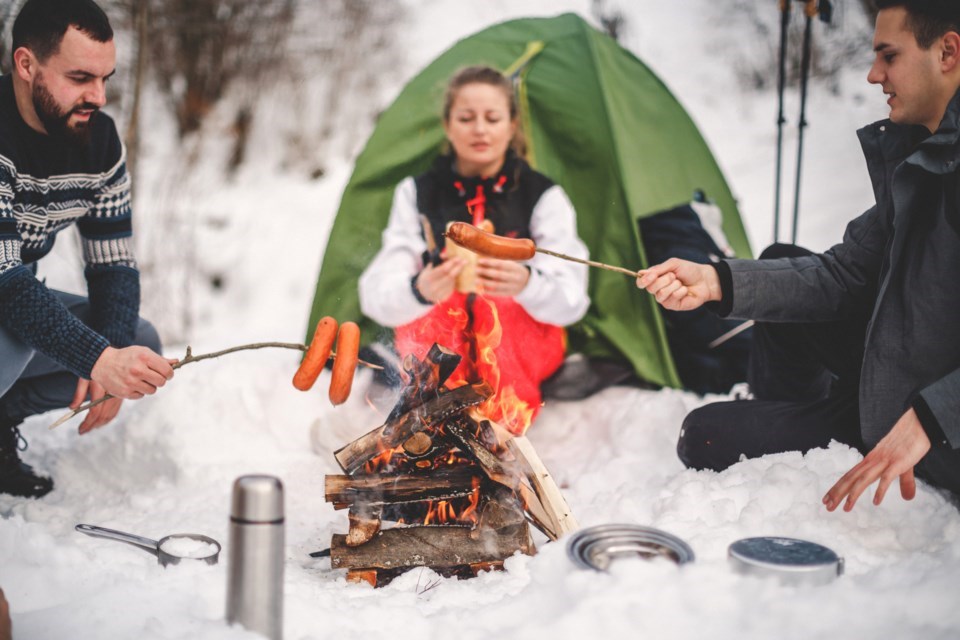Winter camping can be a great way to spend time with the family. Sask Parks are now taking reservations for overnight camping. The park pass is $40 and is good until March 31st, 2022 at all provincial parks. Also, if you already purchased your 2021 pass earlier this year, it is valid until March 31st, 2022 as well. Electrical sites are $29/night and non-electrical sites are $16/night.
"We are pleased to offer online winter camping reservations in Sask Parks for the first time ever," Parks, Culture and Sport Minister Laura Ross said. "We know many families will be staying close to home again this season, so we want to ensure there will be a variety of nearby winter experiences and overnight opportunities available for everyone to enjoy."
Winter camping can be a fun and enjoyable experience. For us new to the idea of leaving our warm homes to brave the elements outdoors, here are a few things you should know. Shelter, water, food and warmth are going to keep you alive no matter what time of year it is. So for shelter, a four-season tent is best. A three-season tent will work but if it is snowing hard with strong winds, there may be a chance it could tear.
Make sure you have a water source close by and stay hydrated. During winter when everything is frozen over, heat a small amount of water then add clean white snow to the pot. The added water will stop the snow from scorching thus avoiding making the snow water off-tasting.
If you are backpacking or want a quick hot beverage, you may need a portable cooking stove that can take cold temperatures. Liquid-fuel stoves are more dependable in colder temperatures but take longer to boil and are heavier to carry. Canister stoves are lightweight but the fuel doesn’t do as well in cold temperatures. You would need to keep the canister in your jacket or in the foot of your sleeping bag to ensure it doesn’t freeze. Either stove will work so it comes down to personal choice on which you would use for backpacking or site camping. And always have a backup plan by bringing the essentials to build a fire or having an extra stove on hand. Bring a small piece of plywood to make a base for your stove. When the stove gets hot, you don’t want to lose your supper if the stove drops down into melted snow and/or tips over.
Our bodies create heat when we eat, so eating small amounts of food often will help to create heat as we need it. Have a good breakfast, but a small lunch so you don’t stop long enough for your body to cool down. Plan for a hot supper in the evening.
Sleeping is half the fun of camping. Choosing the best sleeping bag for winter camping can be a challenge as you don’t want to be too cold or too warm when you sleep. A down or synthetic sleeping bag with an extra -10C added to the expected outdoor temperature will suit your needs. So, if it is going to be -30C use a sleeping bag that is good to -40C. Also invest in a sleeping bag liner. It helps to retain more warmth and keeps the inside of your sleeping bag cleaner longer.
Use two sleeping pads for insulation, a closed-cell foam pad next to the ground and a self-inflating pad on top. The foam pad serves as extra insurance in case the self-inflating pad gets punctured. Pads designed for all-season or winter use usually have an R-value of about 4.0 or higher.
Layer your clothing. Start with a base layer of long underwear to keep you dry. The middle/insulating layer with fleece or insulated pants and a ski or snowboard jacket. With the middle layer, there are many factors to take into consideration like how active you will be or are you just sitting by the fire. The middle layer needs to keep you insulated while not letting you overheat and making the base layer moist. You could bring extra jackets to change out for more or less warmth. The outer layer needs to keep out wind and water but you need to vent heat from your body so you don’t sweat. Your outer layer needs to be breathable and waterproof.
Wear weather appropriate socks, mittens, hats and scarves. You might even consider using hand-warmers in your mittens/gloves and boots to keep your extremities warm. Be aware of frostbite. Cold weather camping can be fun but be aware of fingers and toes. Numbness or discolouration are signs of frostbite. If you see any signs, seek medical attention immediately.
Camping essentials also include: a first-aid kit, a good outdoor knife and or hatchet, flashlights, sunscreen, rope and a compass or GPS.
To stay up-to-date on all Sask Parks winter programs and activities, follow Sask Parks on Facebook. To register for a guided program or reserve winter camping, visit http://parks.saskatchewan.ca




